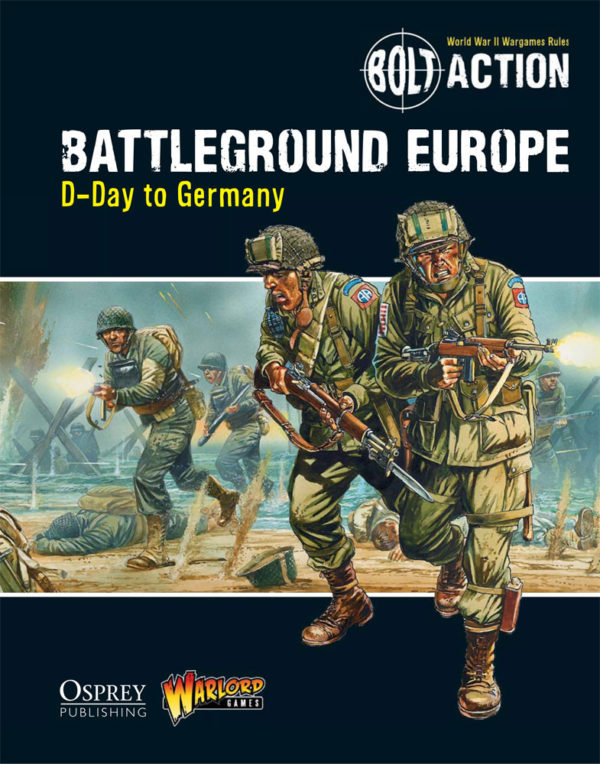This battle is perhaps most well known due to the extraordinary actions of a famous German tank commander, Michael Wittmann. In the span of 15 minutes his unit would be responsible for destroying over 13 tanks, two anti-tank guns and over a dozen transport vehicles – with most of these kills going to Wittmann himself. However, the battle had greater implications, both for the invading Allies and the German forces.
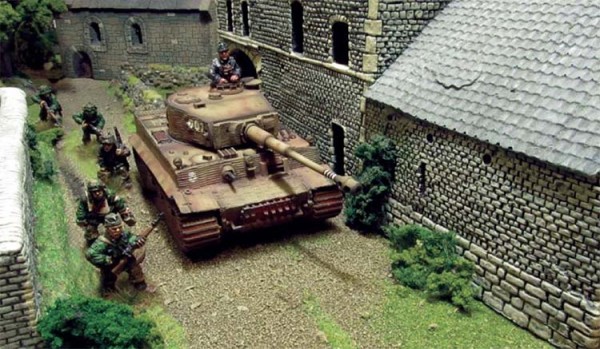
Background
As the Allies continued to bring more troops over the beach in the days following D-Day, it was clear to the defending Germans that the city of Caen would be an early target. It lay right between Juno and Sword beaches, had usable airfields, and unlike most of the area its fields weren’t flooded.
Indeed, the British coming from Sword beach had Caen set firmly in their sights. At 9 miles inland, it was an ambitious target for day one of the invasion. While resistance on Sword beach was relatively weak, the advance soon ground to a halt when the 21st Panzer Division attacked the British in force.
While the British would eventually repel the German counter-attack, their momentum was nonetheless stalled. The push towards Caen would resume on D+1. The British had planned on overrunning the city’s defences swiftly before enemy reinforcements could arrive. The Germans were one step ahead. They regarded Caen as critical to their ability to maintain an effective military presence in the Cotentin Peninsula. As such they quickly filled it with troops.
The British ran straight into the Panzer Lehr Division – one of the German Army’s most powerful armoured formations. The idea of quickly taking Caen was beginning to look more and more unlikely as the British advance ground to a halt outside the town. However, there was a glimmer of hope for the Allies. The US First Army and British XXX Corps had been delivering quite a beating to the Germans to the west of Caen. A seven and a half mile hole in the German lines had been opened up. By exploiting this breach in the enemy lines, the Allies could bypass Caen’s western defences. The Germans, now surrounded, might be inclined to retreat or even surrender. The potential upside made this too good a chance to pass up.
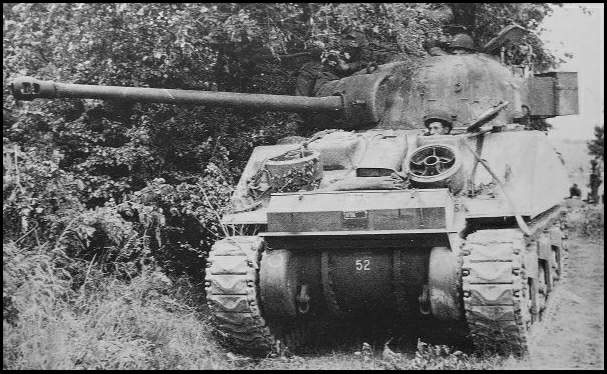
The British 7th Armoured Division – the Desert Rats – were given the mission of punching through the gap and securing the town of Villers-Bocage. It is unclear whether there were communication problems or other errors, but for some reason much of the division spent 12th June still advancing towards their earlier objective of Tilly-sur-Seulles. These issues were quickly dealt with, however, and the division’s 22nd Armoured Brigade was soon on its way towards the gap. By the end of the day, the 22nd was hunkered down for the night near La Mulotiere. Their plan was to attack in the morning, and take the ridge overlooking Villers-Bocage, occupying Point 213, the highest point of the ridge. The first elements to advance, the 4th County of London Yeomanry, would pass right through the town and head straight for the ridge. The 1/7th Queen’s Royal Regiment (West Surrey) would be next, occupying the town itself. Finally, the 5th Royal Tank Regiment would take up a similar point of high ground to the southwest.
The Germans had plans of their own. If the town didn’t receive reinforcements, it would eventually fall. The reserves were mobilized and brought into the area on 12th June. These reserves consisted largely of the 101st SS Heavy Panzer Battalion, which counted Michael Wittmann amongst its company commanders.
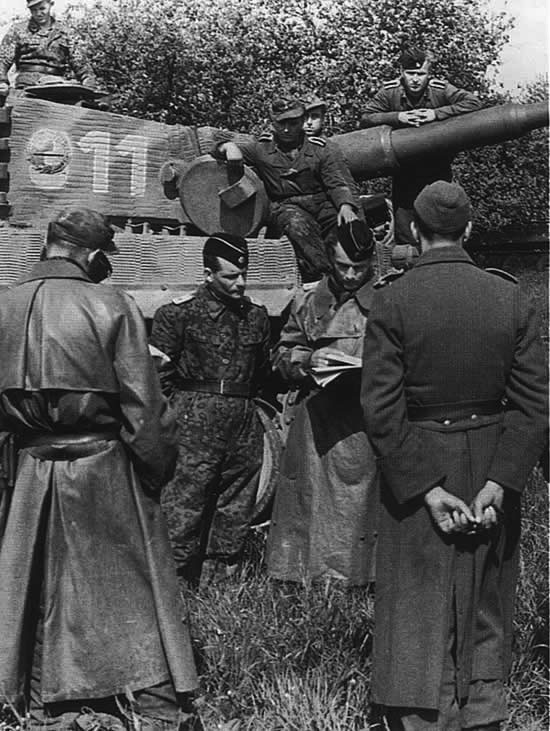
Wittmann was already a household name in Germany, having knocked out over a hundred enemy tanks. The 101st had arrived in France only a few months before. On their way to Villers-Bocage they lost more than half of their tanks to Allied air attacks and mechanical failures. By the time Wittmann was in place with his company, he had only six tanks under his command – half of the number he normally took into battle.
The Battle
On the morning of 13th June, the British advanced into Villers-Bocage. Aside from chasing away a few German reconnaissance elements, they encountered no resistance. They entered the town to the cheers of the French locals. They set up a perimeter around the town and waited for the inevitable German counter-attack.
The men advancing towards Point 213 did so without any advanced reconnaissance. This is something pointed out as being odd in hindsight. Wittmann had placed the remnants of his company at the base of the ridge under Point 213, and as such stood right in the way of the approaching British. He had characteristically hidden his tanks among the foliage, covering them with tree branches to further conceal them. The British were advancing into a trap.
Wittmann had expected a British move through his area, but he had not expected it so soon. Elements of the 4th County of London Yeomanry were barrelling down the road towards his position, and he knew it was only a matter of time before he was spotted. He had to decide at once what to do.
His next actions have been described as either selflessly heroic or brash bordering on irresponsible. He told the other tanks to hold their position, and he charged the British in his formidable Tiger tank. The British were understandably taken by surprise at the sight of a lone Tiger appearing as if from nowhere.
Wittmann charged the line of tanks, knocking out the last one in the line – a Cromwell. It was quickly reduced to a smoking wreck, and since it was in the back of the British line, its carcass prevented the rest of the tanks from withdrawing, as well as hampering any reinforcement efforts up that road.
Wittmann destroyed five tanks during his incredible charge, but he wasn’t finished. He went straight into Villers-Bocage, while the British tried desperately to bring their anti-tank weapons to bear. Their efforts would prove futile, as Wittmann’s tank would simply overrun their position and force the outgunned infantry to seek cover.
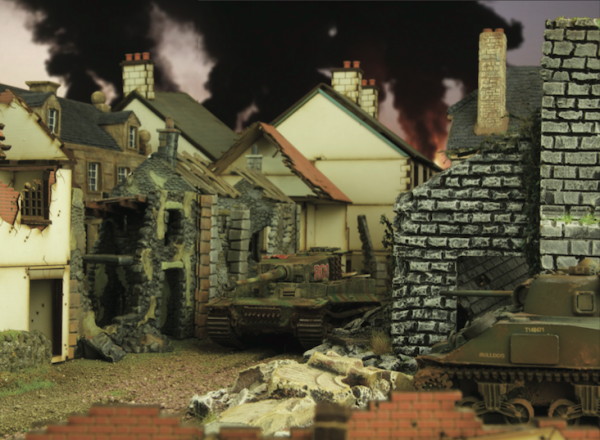
Once in the town, he continued to pummel the hapless British, destroy a dozen more tanks and several anti-tank guns and other vehicles. Much of the British arsenal seemed useless against the thick-armoured behemoth, simply glancing off its armour without causing any real damage.
Only a lucky shot to his tank’s treads finally put an end to his wild assault. Wittmann and his crew escaped their vehicle and made it back to their HQ on foot, evading the British patrols in the area.
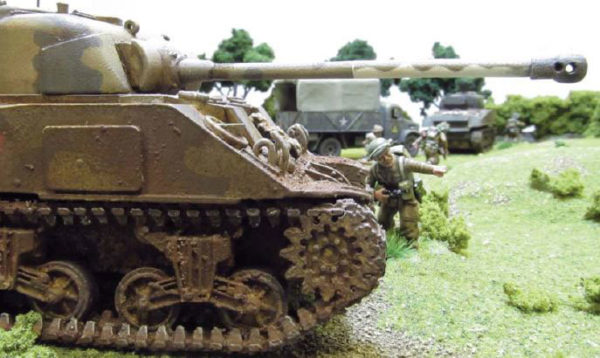
While much has been said of Wittmann’s intrepid attack, many feel that the British handed him a gift by not using standard procedures for supporting tank advances with accompanying infantry elements. Also, the order not to send reconnaissance elements towards the ridge has often been called into question. If the British had spotted those elements of the 101st SS Panzer Division, and had they brought a more conventional combined arms approach when reacting to them, the outcome could have been very different.
Likewise, Wittmann’s charge has its fair share of detractors. Had he been taken out shortly after his initial successes, it would no doubt cast his effort in a different light. Also, some have put forth the theory that had he coordinated his assault with other elements, the damage he inflicted would have been magnified, and perhaps the battle would have ended right then and there.
Regardless of what has been debated about this action, his daring and skill that day stand out as an impressive example of just how much of a difference a single element can make in warfare. It also stands out as one of the most remarkable tank actions of the entire war.
With the appearance of the 101st SS Panzer Division, the battle was quickly rising to a boil. It was clear to the Germans that point 213 had to be secured if they were to successfully retake the town, so the 1st company of the 101st Panzer Battalion was charged with the mission.
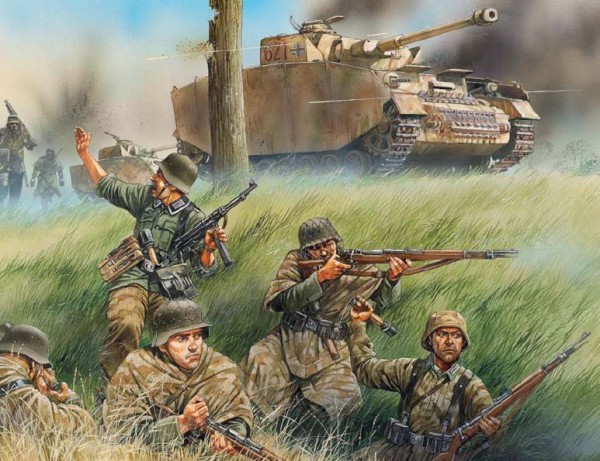
The British were back in town doing what they could to shore up their defences. They placed a ring of anti-tank guns around the outskirts, while infantry from the Queen’s Royal Regiment began securing various objectives within the town, as well as providing perimeter security for the town itself. While they had taken the town with relative ease, the German counter-attack was already under way. Brutal house-to-house fighting disrupted the British, who suddenly found several pockets of infiltrating Germans attacking them sporadically throughout town. Soon, the British units were ordered to fall back and reorganize, and this gave the attacking Germans the chance to solidify their foothold on the town.
Meanwhile, things were looking grim for the men on Point 213. The 101st had surrounded them, and taken several prisoners. Viscount Cranley, commander of the Yeomanry on the ridge, radioed HQ with the news: their position was being overrun, and they could not withdraw. He set his men up in an all round defence of the ridge, and dug in tight.
A single Cromwell attempted to break out from the ridge and link up with the British in the town, but it was quickly knocked out. The Germans began shelling the nearby trees with airbursts, and soon a deadly rain of wooden shrapnel was tearing its way through the embattled troops.
Surrounded and taking casualties, the men on the ridge surrendered, and tried to burn their tanks rather than have them fall into enemy hands. They would not succeed, however, as the Germans were quick to snatch them up before they could be scuttled. Point 213 was now firmly in German hands.
Back in Villers-Bocage, the British had regrouped and were hastily setting up their defences. Their plan was to place anti-tank guns all along the front line, and put an ambush site right in the middle of town. As the Germans rolled in, the anti-tank guns would take out as many as possible, while the ones that got through would be funnelled straight towards the ambush.
Just after lunch, the Germans mounted their attack. Their plan was to move in under a two-pronged assault, one along the main road and the other on a road parallel to the south. The commander of the Panzer Lehr Division wanted the town square secured so his counter-attack could spread out from there.
The Panzers were almost immediately engaged by antitank guns placed near the edge of town. At first it looked like they would be successful in holding off the armoured advance, but after a brief exchange the guns were silenced and the German Panzers moved on.
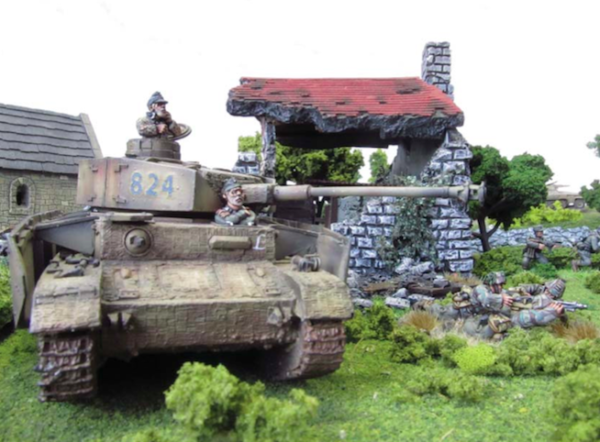
The Germans pushed into the town and soon found themselves right in the middle of the British ambush. The line of Tigers came under intense fire from tanks (particularly the Firefly Shermans), anti-tank guns and PIAT-armed infantry.
The Germans realised they were being ambushed, and attempted to outflank their enemy. The British had planned for this, as they blasted four more Tigers and disabled a fifth.
In one notable exchange, Sergeant Bramall in command of his Sherman Firefly spotted a Tiger through the windows of a nearby crumbling building. He concluded that the safest way to take it out was to shoot through the building itself. He sent two rounds right through the brick, hitting the Tiger and inflicting some external damage. Bramall didn’t give up though, as he quickly moved his tank to fire at the Tiger’s vulnerable rear armour, taking it out.
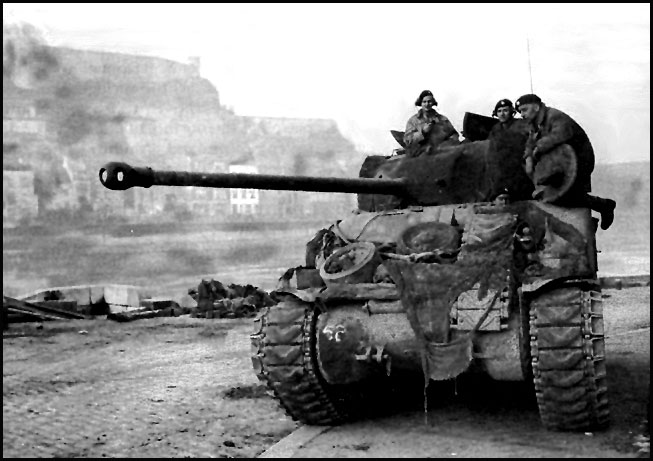
Despite the success of the ambush, the battle was turning against the British. The Germans had been trying to commit the 2nd Panzer Division to the fight for days, and on the afternoon of 13th June they finally arrived. The Queen’s Royal Regiment was putting up a brave fight to maintain its lines, but the momentum of the German attack proved too much. Holes began to appear, and German soldiers poured through and infiltrated the town. Elements of the British 7th Armoured Division were outside the town, but under heavy pressure from both sides and thus were unable to enter the town and reinforce the defenders there.
The British commanders faced the tough choice of what to do. With the Desert Rats delayed outside the town, and darkness falling, they doubted their battalion could hold the town for long. They decided to withdraw.
Under artillery cover, the infantry were the first to pull back, followed by the tanks. The Germans hit the retreating troops with artillery and attacked with infantry. The British made them pay for every inch on their way back to Allied lines, inflicting heavy casualties and eventually repulsing the Germans after two hours of bitter fighting.
For a battle that only lasted a day, its outcome would have far-reaching effects. For many historians, the failure to hold Villers-Bocage marks the end of the post-D-Day ‘land grab’. The imbalance had stabilized and the Germans were now in a position to make the Allies pay dearly for every inch of ground.
Why not take the fight to the tabletop? – The formidable Michael Wittman is available from our website in either the plastic Tiger Zug or singularly, dimounted in his fearsome resin Tiger;
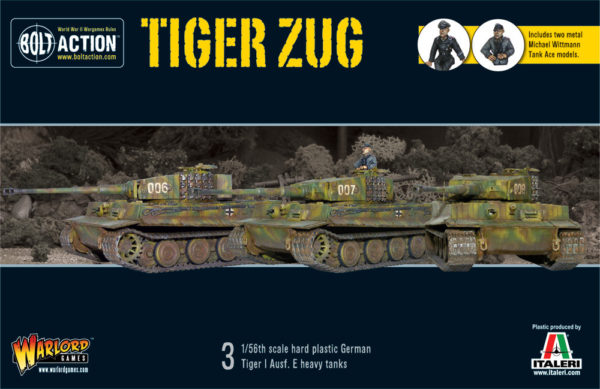

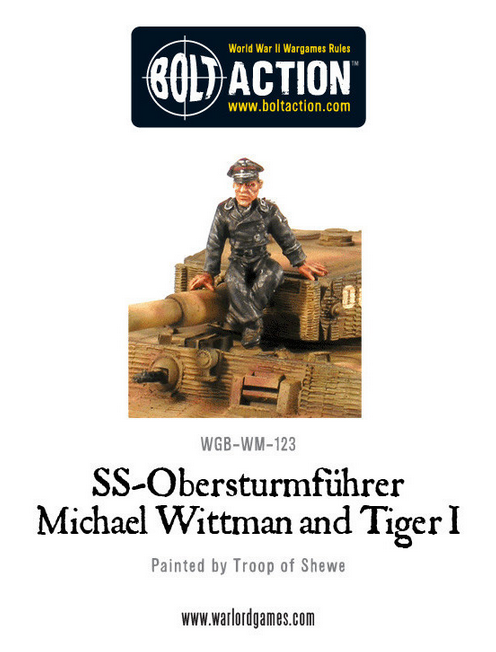
The battle for Villers-Bocage is covered in our ‘Battleground Europe: D-Day to Berlin’ supplement for Bolt Action, with even more background on the events leading-up to the battle, and those which followed.
